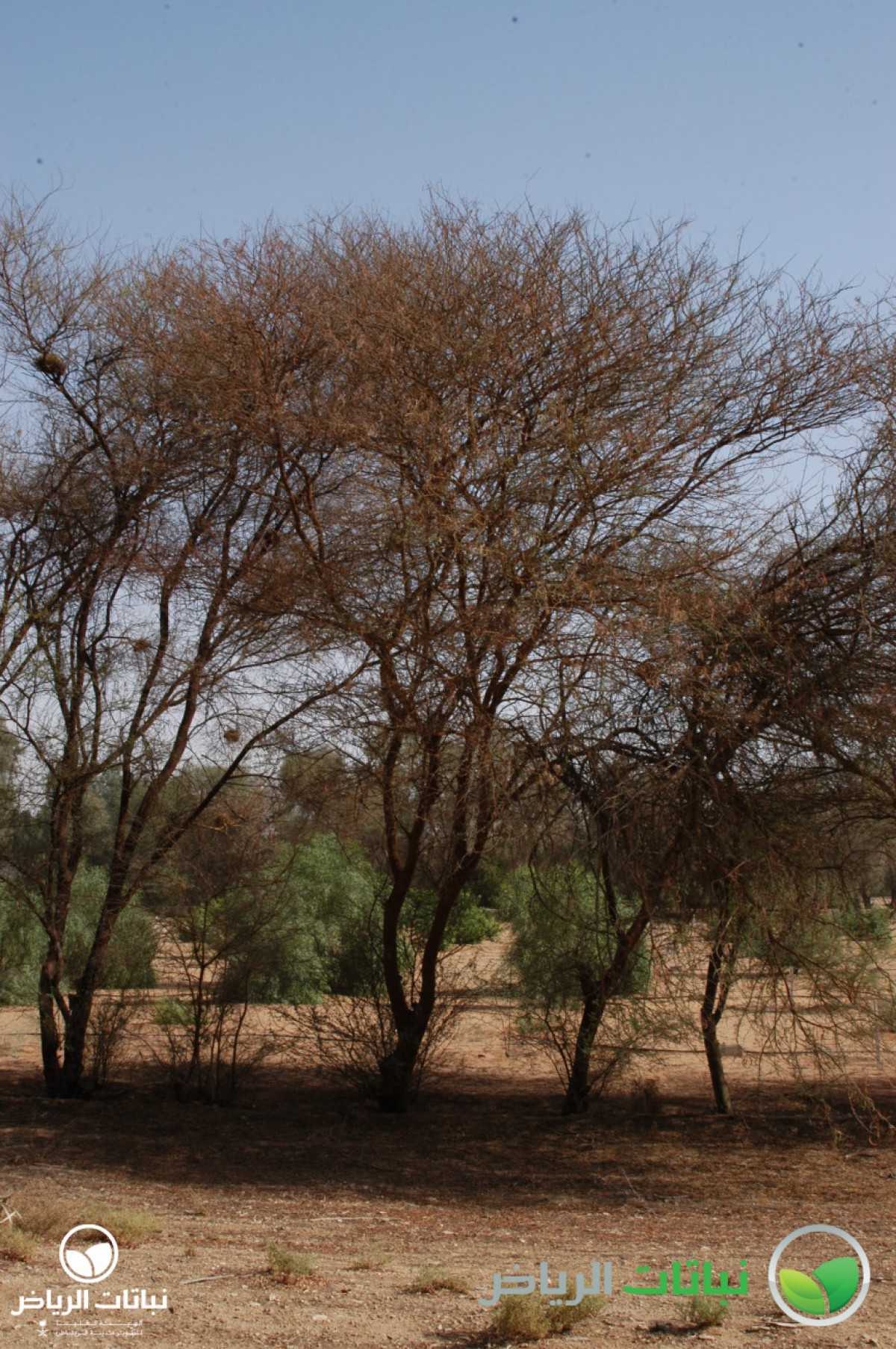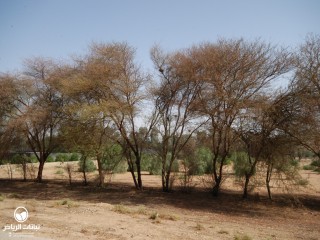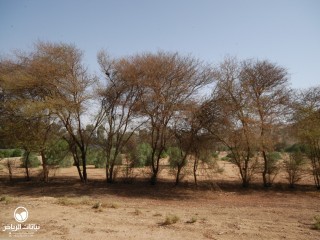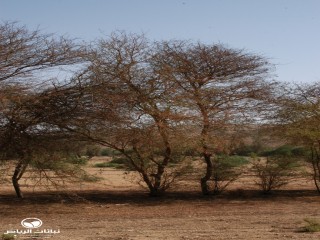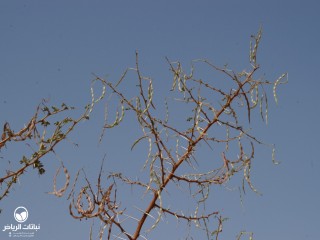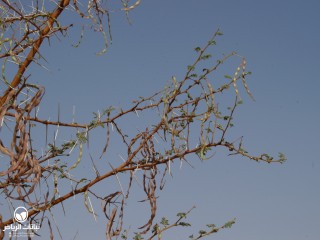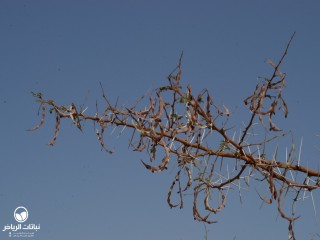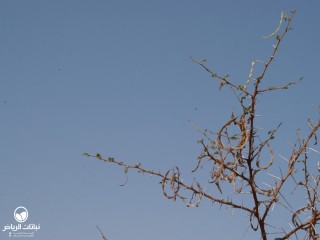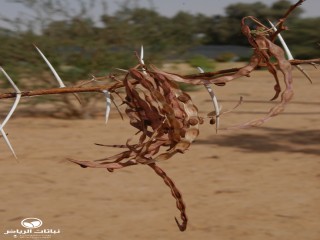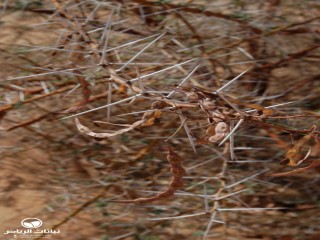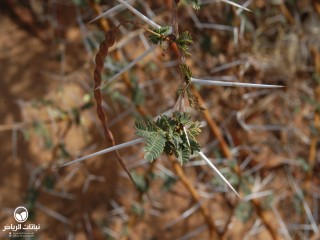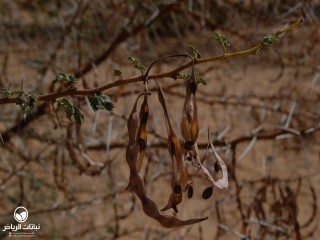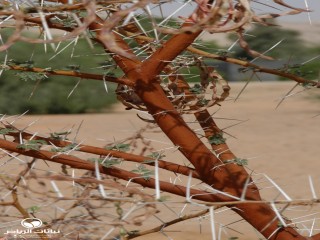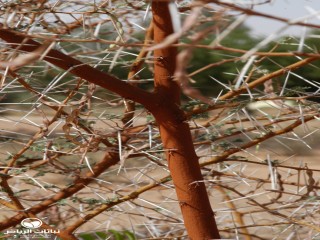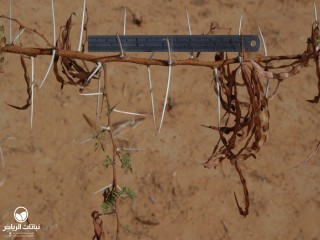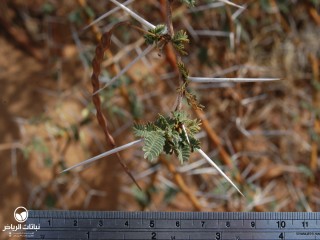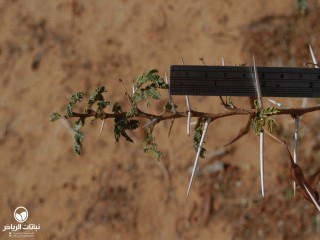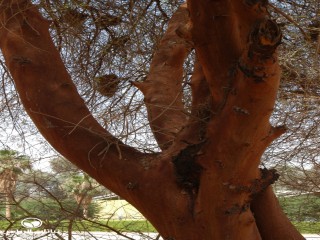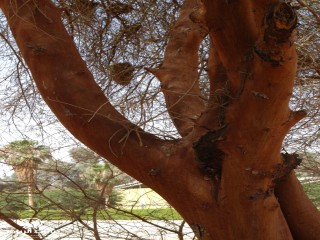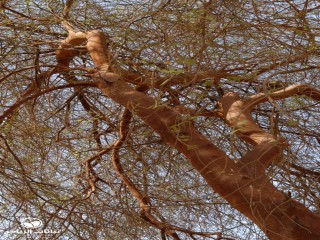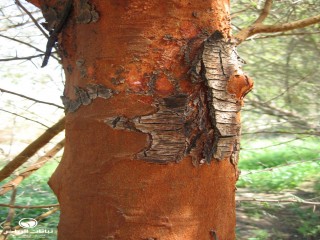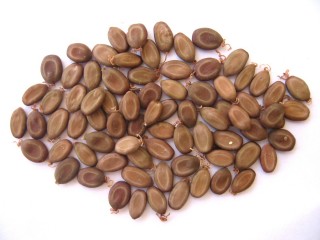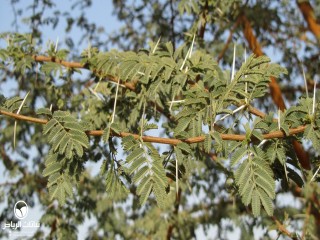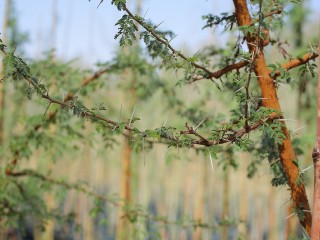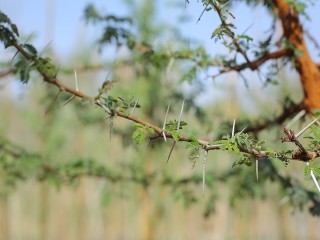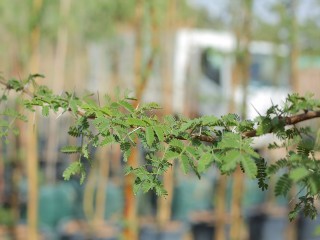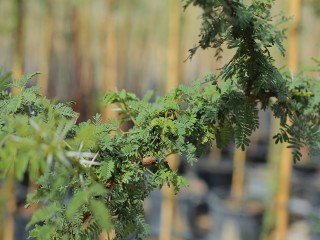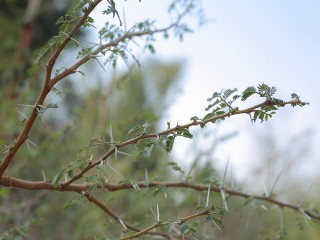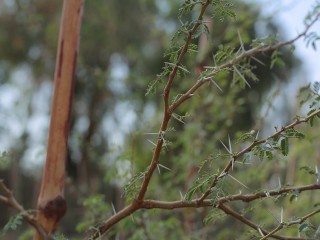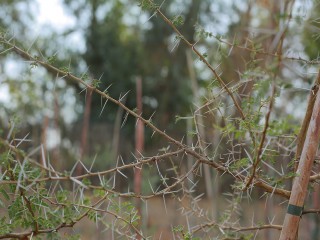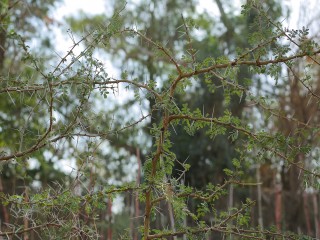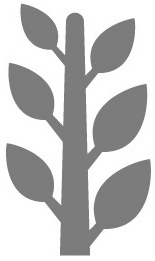Riyadh Plants
Shittim Wood, saffar ahmer, shittah tree
A gregarious, common savannah tree, A. seyal grows from west to east Africa through the Arabian Peninsula: there are several botanical varieties. Its Arabic names include saffar ahmer; it is also known as the shittah tree. A small tree, thorny and flat-topped, it is distinguished by its smooth trunk and branches, covered in a mealy, rust-red powder, which when rubbed off reveals a bright-green bark beneath. Sparsely branched, the sweetly-scented yellow flowers appear in the spring before the feathery leaves, which have two straight, light-grey thorns at their base. Seed pods are long and narrow. Trees can remain leafless for several months, depending on the occurrence of rain. It grows on deep, heavy and poor soils with a high pH (6–8), and tolerates salts and periodic flooding, hence the potential for planting in rowdah situations in the Arriyadh region. It can be a frost-sensitive species. A. seyal is an important source of gum arabic, and of early dry-season fodder. Propagated by scarified seed, large cuttings may strike root readily. Stands of var. seyal can be established by direct sowing of pretreated seeds. Over 40 species of insects are associated with the tree: beetles may damage seeds or attack the wood. A. seyal is suitable for planting as a shade or shelter tree in stands or as a barrier or thorny hedge. With low maintenance requirements, the tree can be cut down to the ground and a new canopy develops, although mature trees do not recover well. Pruning of small branches necessary to keep shape.
